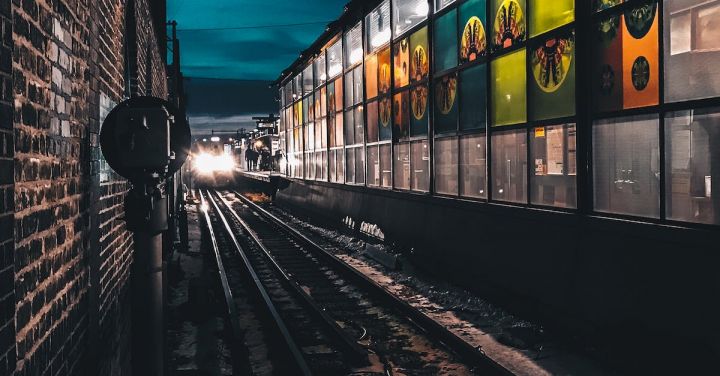The age of railways was a transformative period in human history. It brought about a revolution in transportation, connecting distant places and facilitating the exchange of goods and ideas. This era also inspired artists to capture the essence of this transformative force through their work. In this article, we will explore the artistic reflections on the age of railways and the impact it had on the artistic landscape.
One of the most notable artistic responses to the age of railways came from the Impressionist movement. Artists such as Claude Monet and Pierre-Auguste Renoir were captivated by the industrial landscapes that emerged alongside the railways. They sought to capture the fleeting moments of steam trains passing by, creating vibrant and atmospheric paintings. The Impressionists used bold brushstrokes and vivid colors to convey a sense of movement and energy, mirroring the dynamism of the railways themselves.
While the Impressionists focused on the external aspects of the railway, other artists delved deeper into its impact on society. The German expressionist painter, Ernst Ludwig Kirchner, explored the psychological effects of the railways in his work. He depicted crowded train stations and busy platforms, capturing the anxieties and disorientations that came with the speed and scale of this new mode of transportation. Kirchner’s paintings often featured fragmented and distorted figures, reflecting the sense of dislocation experienced by many during this time.
The age of railways also had a profound impact on the literary world. Writers such as Charles Dickens and Emile Zola wrote extensively about the railways and their social implications. Dickens, in particular, used the railways as a metaphor for the human condition, depicting the stark contrasts between the rich and the poor in his novels. The railways were portrayed as both a symbol of progress and a source of social inequality, highlighting the complex relationship between technology and society.
In addition to visual art and literature, the age of railways also influenced the world of music. Composers like Richard Wagner incorporated the sounds of trains and steam engines into their compositions, creating a sense of drama and intensity. Wagner’s opera, “Tristan und Isolde,” famously features a musical motif that mimics the rhythmic chugging of a train, representing the relentless pursuit of desire.
The age of railways also inspired a new genre of photography. Early photographers, such as O. Winston Link, captured the grandeur and beauty of steam locomotives in their black and white images. Link’s photographs showcased the majesty of these machines, highlighting their intricate details and the sense of power they exuded. These photographs not only documented the age of railways but also celebrated its significance as a symbol of progress and human achievement.
In conclusion, the age of railways had a profound impact on the artistic world. Artists, writers, and musicians found inspiration in the transformative force of the railways, capturing its essence through various mediums. From the vibrant and atmospheric paintings of the Impressionists to the psychological explorations of the expressionists, the artistic reflections on the age of railways offer a glimpse into the profound changes brought about by this revolutionary mode of transportation. The railways not only connected distant places but also sparked a new wave of creativity and artistic expression that continues to inspire us today.
